Key takeaways:
- Indie rock music originated in the late 1970s from the punk scene, emphasizing independence and self-expression.
- The genre evolved significantly in the late ’90s and early 2000s due to digital technology, allowing artists to share their work without major label constraints.
- Key influences include punk and post-punk movements, as well as innovative artists like Brian Eno and David Bowie, fostering a spirit of experimentation.
- Music journalism plays a crucial role in connecting artists with audiences, documenting indie rock narratives, and encouraging critical dialogue around the genre.
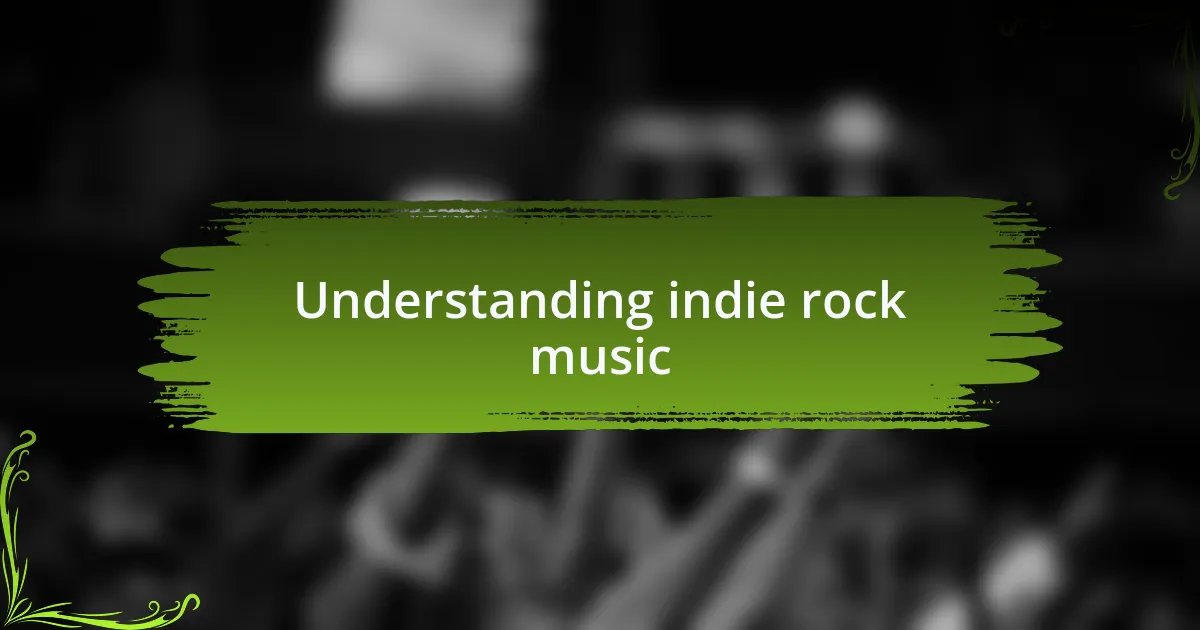
Understanding indie rock music
Indie rock music, at its core, represents a spirit of independence and self-expression that resonates with many artists and fans alike. I vividly remember the first time I stumbled upon a local indie band playing in a tiny café; there was an energy in the room that felt raw and unfiltered, capturing the essence of what indie rock truly embodies. It’s fascinating to think about how this genre emerged from a rebellion against mainstream conventions, don’t you think?
The beauty of indie rock lies in its diversity and innovation. Each band brings a unique sound that reflects their individual experiences and influences. I often find myself reflecting on how a particular song can evoke specific moments in my life—a lyric, a melody, or even the imperfect recording quality can transport me back to a cherished memory.
Exploring indie rock allows fans to appreciate not just the music but the narratives woven into each track. I often wonder what it is about a seemingly simple guitar riff that can convey such profound emotions. It’s this complexity and depth that keeps me coming back for more, reminding me of the power music has to connect us on a personal level.
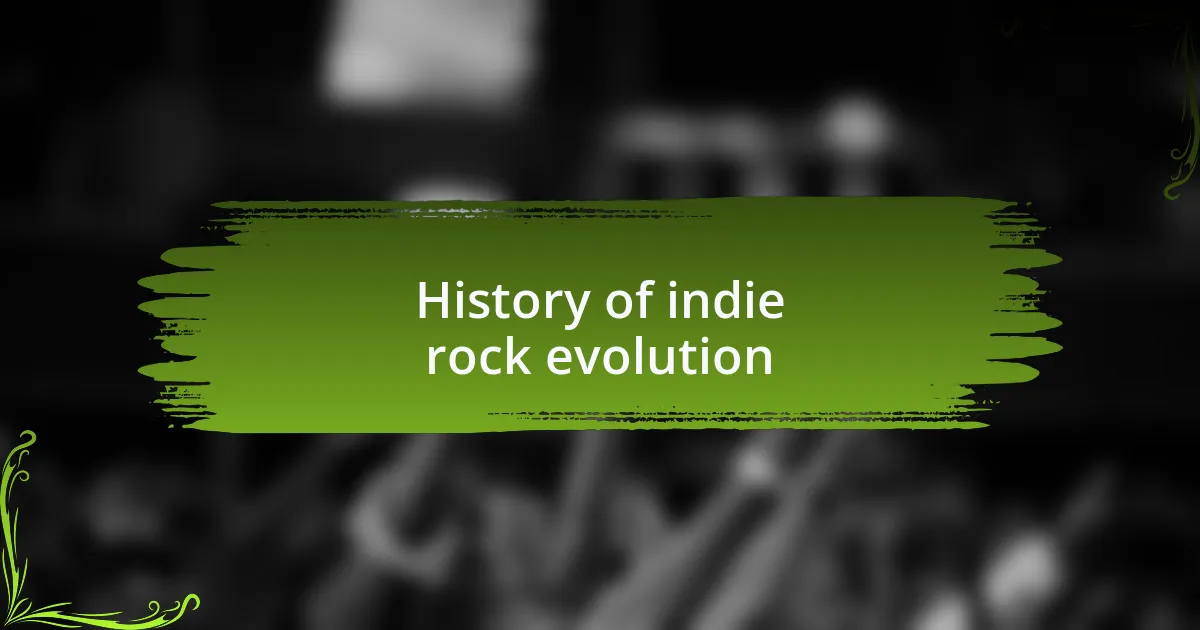
History of indie rock evolution
Indie rock’s roots trace back to the late 1970s, emerging from the punk rock scene. Initially, indie bands aimed to challenge the commercialized sound dominating radio waves. I remember hearing The Replacements for the first time and feeling a connection to their gritty sound; it was as if they were speaking directly to the struggles of youth and rebellion.
As the genre matured in the 1980s and 1990s, bands like R.E.M. and Sonic Youth began to gain traction, blending alternative sounds with thoughtful lyrics. I often think about how their music reflected the cultural shifts happening at the time. It was a fascinating fusion of introspection and innovation, a calling card that still resonates with indie artists today.
The evolution of indie rock truly accelerated in the late ’90s and early 2000s with the rise of digital technology, enabling more artists to share their work without needing a major label. I fondly recall discovering new bands through online communities, which made the genre feel like an underground gem just waiting to be unearthed. Isn’t it incredible how technology can bridge gaps and foster community in music? It’s a testament to how indie rock continues to thrive and evolve, creating connections across generations.
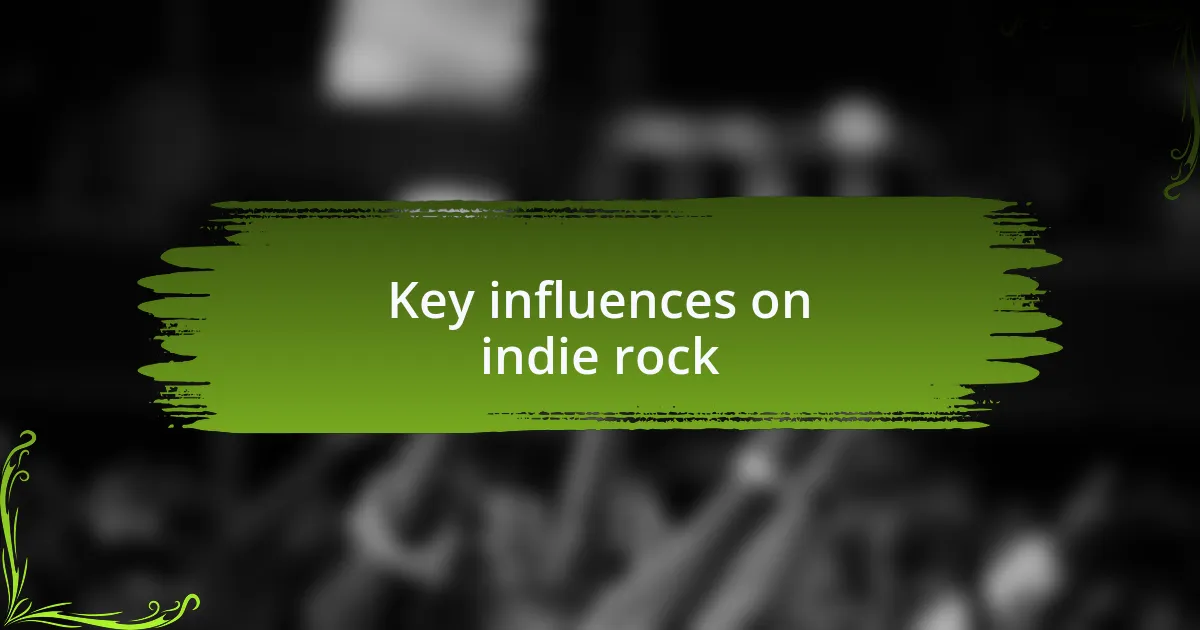
Key influences on indie rock
The early influences on indie rock are deeply embedded in the punk and post-punk movements. Bands like The Velvet Underground and the Ramones set a tone that was both rebellious and raw. When I first stumbled upon “Sheena Is a Punk Rocker,” I felt this surge of energy, a reminder that music could be both simple and profound. Isn’t it fascinating how such straightforward chords can carry so much meaning?
As indie rock evolved, it drew from a diverse tapestry of sounds, with artists like Brian Eno and David Bowie pushing the boundaries of what rock could be. I vividly recall the first time I listened to Eno’s “Another Green World.” It was like stepping into an alternate universe where experimental sounds could coexist with classic melodies. This blending of genres opened new doors for indie musicians, encouraging them to explore their creative depths.
The emergence of DIY ethics also played a significant role in shaping indie rock. Independent labels began to flourish, giving artists the freedom to create without commercial constraints. I remember feeling inspired upon hearing stories of bands recording in basements or living rooms. That sense of authenticity resonated with me deeply; it ignited a belief that music should be genuine and personal, rather than polished and manufactured. Isn’t that what makes indie rock so special? It’s all about the journey and the connection we share through each note and lyric.
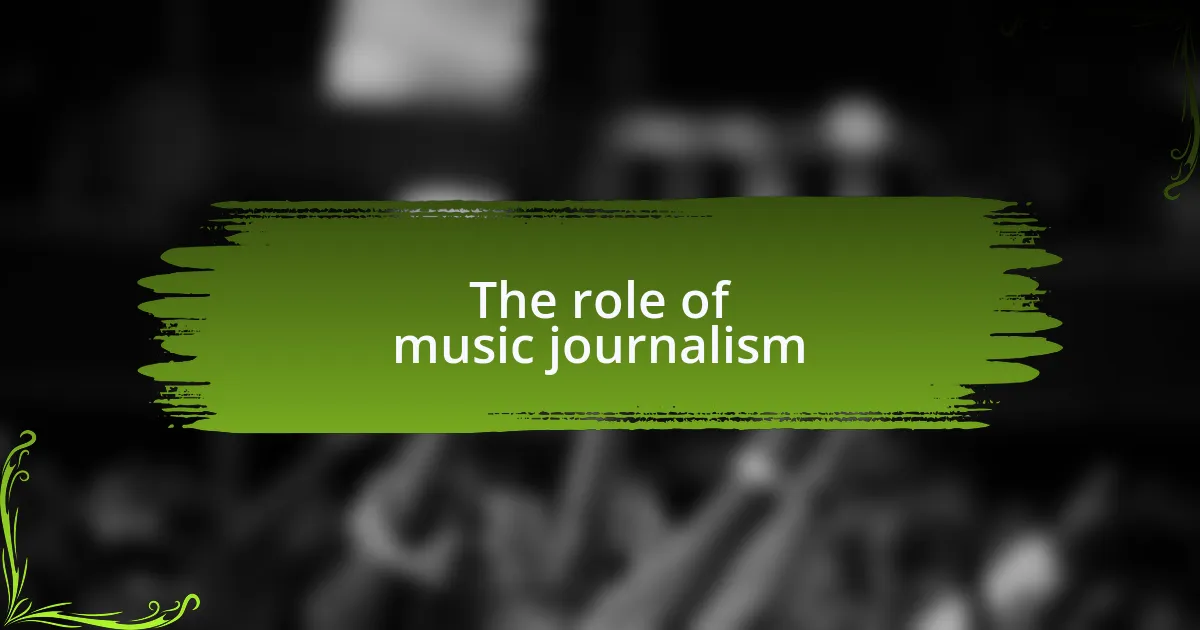
The role of music journalism
Music journalism serves as a vital bridge between artists and their audience, providing a platform for independent voices to be heard. I remember the thrill of discovering a band in a small piece written by a passionate journalist; it felt like I was part of an exclusive club. How powerful is it that a few well-chosen words can ignite a movement or revive a forgotten song?
As indie rock continues to evolve, music journalists have the responsibility of documenting its narrative, ensuring that stories of struggle and triumph are not lost. When I reflect on the countless reviews and interviews that shape our understanding of the genre, I realize how these insights create a richer context for listening. Can you imagine enjoying an album without knowing the heart and soul that went into it?
The role of music journalism also lies in critiquing the status quo, encouraging artists to innovate. I often find that the most memorable pieces challenge not just the music itself but the culture surrounding it. It’s a dance of dialogue, where writers spark conversations and fans engage deeply with the music, reminding us of the power of critical thought in the arts.
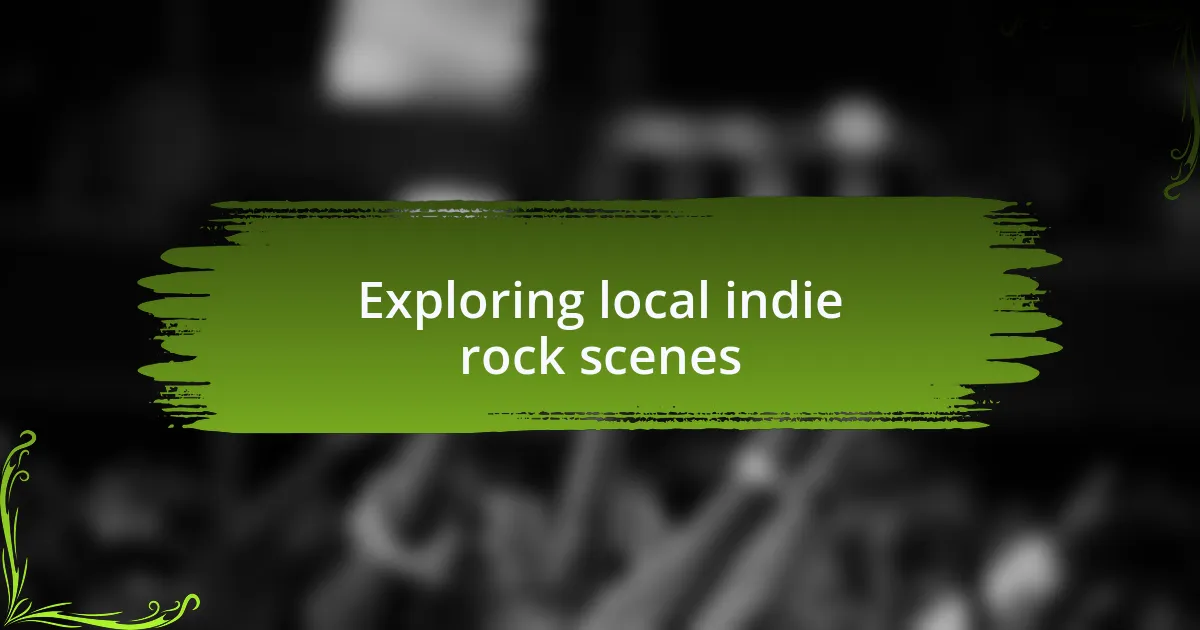
Exploring local indie rock scenes
Exploring local indie rock scenes allows us to connect with the heartbeat of our communities. I remember my first visit to a local venue where an unknown band played for a handful of loyal fans. The energy in the room was electric, and it felt like being part of a secret movement. Have you ever experienced that sense of belonging among strangers united by a love for raw, unfiltered music?
In these local scenes, you often find the most innovative sounds emerging, sometimes even before they hit mainstream recognition. I vividly recall stumbling upon a garage band that blended folk and punk in a way I had never heard before. Their authenticity struck a chord with me, and I couldn’t help but wonder how many other treasures lay hidden in the shadows, waiting to be discovered.
As I’ve delved deeper into these indie communities, I’ve realized how important it is for us to support them. Each ticket purchased and every shared post contributes to nurturing an environment where creativity thrives. So, when was the last time you explored your local music scene? You might just find your new favorite band.